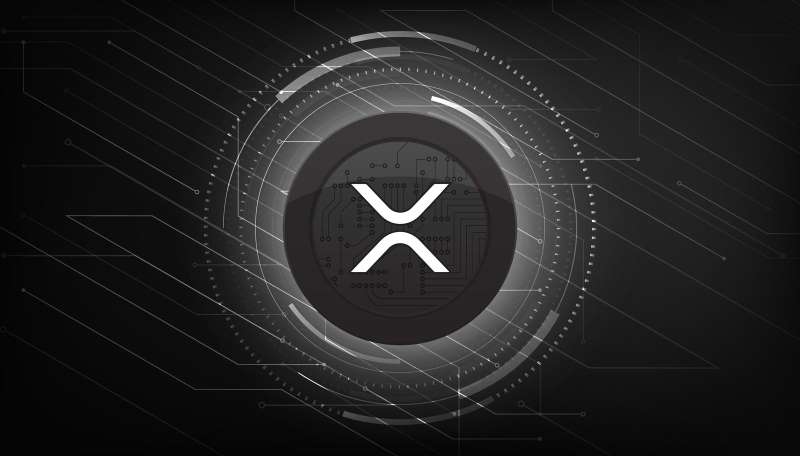In exploring the future of financial transactions, Central Bank Digital Currencies (CBDCs) and blockchain technology are frequently discussed as transformative elements. CBDCs represent a digital form of fiat money, issued and regulated by a country’s central bank. They aim to bring the security of traditional banking to digital transactions while offering more efficiency and potentially greater accessibility. Blockchain, the underlying technology of many digital currencies, is an immutable ledger that provides a high level of security and transparency for the transactions it records. Together, they could offer a sophisticated framework for a modern payment system.
The interplay of CBDCs and blockchain technology suggests a significant shift in how payments could be made and processed. While cash and traditional banking have long dominated the payment landscape, the efficiency and speed of blockchain, combined with the trust and regulation of CBDCs, could pave the way for rapid and secure transactions across borders. However, despite the potential, the implementation of CBDCs and blockchain must be navigated carefully, considering the technological, economic, and regulatory challenges that come with widespread adoption.
Key Takeaways
- CBDCs offer a regulated and digital alternative to traditional fiat currencies.
- Blockchain technology enhances transaction efficiency and security.
- The integration of CBDCs and blockchain may redefine cross-border payments.
Evolution of Payment Systems
The evolution of payment systems reflects a continuous shift towards increased efficiency, security, and accessibility. From the exchange of goods through barter to the emergence of digital currencies, the progression has significant implications for the monetary framework.
From Barter to Digital Currency
The journey from primitive bartering systems to modern digital currency has been transformative. Initially, money was an abstract concept created to facilitate the exchange of goods and services. The financial system evolved from using objects like shells or grains as currency, to minting coins and printing cash, providing a standardised means of transaction. With the advent of electronic banking, digital money became a reality, allowing for more complex financial interactions without the physical exchange of currency.
The 20th century witnessed the birth of electronic payment systems, which paved the way for credit cards and online banking. These innovations streamlined transactions but still relied on traditional financial institutions as intermediaries. In the 21st century, advancements such as digital currencies and stablecoins offer new possibilities. They promise a future where transactions may no longer require traditional banks, potentially reshaping the financial system.
Rise of Cryptocurrencies and Blockchain
The emergence of cryptocurrencies like Bitcoin marked a pivotal change in how people view and use money. Cryptocurrency is a type of digital currency that uses cryptography for secure transactions, operating on a blockchain network — an immutable digital ledger. The most well-known cryptocurrency, Bitcoin, introduced a decentralised system where transactions and issuance are managed by the network rather than a central authority. Following Bitcoin’s lead, Ether emerged, fueling the Ethereum network that expanded the use cases of blockchain to include smart contracts and decentralised applications.
Cryptocurrencies challenge the traditional financial landscape by offering an alternative to government-issued currencies. They aim to democratise the financial system by enabling peer-to-peer transactions without the need for centralised control. As a result, cryptocurrencies are becoming increasingly integrated into the global payment system, with some businesses even accepting crypto as a payment method. This blockchain-based innovation represents a significant milestone in the evolution of money and payments, suggesting a potential path forward for a decentralised financial system.
The Development and Significance of CBDCs
The emergence of central bank digital currencies (CBDCs) signifies a transformative step by central banks to modernise financial systems and respond to the shift towards digital economies.
Central Bank’s Role in CBDC
Central banks are at the forefront of developing CBDCs, an electronic form of central bank money that citizens can use for daily transactions. They aim to blend the efficiency and technological advancement of cryptocurrencies with the reliability and trust afforded by traditional currencies. In this context, the People’s Bank of China has been a trailblazer with the digital yuan, representing a significant move towards a potential global standard.
Countries like the Bahamas with its “Sand Dollar,” and Thailand, which is diligently testing its own CBDC, are examples where central banks play a pivotal role in designing the infrastructure necessary to deploy these digital assets securely.
Global CBDC Initiatives and Trials
Globally, CBDC initiatives and trials are shaping the future of the financial landscape. China continues to expand its pilot programmes, with aims to establish the digital yuan as an alternative to existing payment systems. The digital yuan is poised to enhance domestic and cross-border transactions with greater speed and lower costs.
The Bahamas became one of the first to go beyond the pilot stage with the full rollout of its CBDC. On the other hand, Thailand’s central bank is actively assessing the potential benefits and challenges of introducing a CBDC, ensuring they pave the way for a seamless integration into the current financial ecosystem.
Design Principles and Technologies Behind CBDCs
Central Bank Digital Currencies (CBDCs) incorporate advanced design principles and technologies to address the demands of modern finance. They are developed to offer secure, private, and efficient money transactions, using Distributed Ledger Technology (DLT), which includes blockchain and digital ledgers for resilience against risks and seamless settlement.
Ensuring Security and Privacy
Security and privacy are paramount in the design of CBDCs to protect against both internal and external threats. The utilisation of advanced cryptographic methods is an essential component, ensuring that transactions remain secure and tamper-proof. Privacy is maintained through sophisticated protocols which allow for transaction integrity without compromising the anonymity of the parties involved. DLTs provide a decentralised structure that minimises systemic risks and prevents single points of failure.
Key to CBDCs’ design is the balance between transparency and privacy, enabling oversight to prevent financial crimes while protecting users’ data. Some CBDC platforms might incorporate smart contracts to automate compliance and reporting, further safeguarding against illicit activities without infringing on individuals’ privacy.
Enabling Efficiency and Access
The second crucial aspect of CBDC design is to foster efficiency and universal access. This entails creating systems that do not just mimic the throughput of current payment methods but exceed them. Swift settlement times are a trademark target for CBDCs, enabled by the speed at which DLT can process and verify transactions.
Financial inclusion is a fundamental objective, hence CBDCs are designed to be accessible. This means broadening access to financial services for individuals who have been historically unbanked or underbanked. Interoperability with other payment systems and CBDCs is also a critical consideration, ensuring that no individual or entity is siloed from the broader economic ecosystem.
The underlying technology of CBDCs must provide a platform that is not only fast and reliable but also user-friendly and widely accessible. It is imperative that CBDCs support a wide range of devices and provide intuitive interfaces to ensure that individuals of varying financial and technological literacy can participate in the digital economy.
Economic and Regulatory Implications of CBDCs
Central bank digital currencies (CBDCs) could profoundly alter the financial landscape, potentially reshaping monetary policy implementation and introducing new regulatory challenges.
Impact on Monetary Policy and Banking
CBDCs offer central banks a novel tool to administer monetary policy directly. They could enable more precise control of the money supply and interest rates, potentially leading to a stabilisation of economic cycles. Central banks might use CBDCs to bypass traditional financial intermediaries, providing liquidity directly to consumers and businesses. This could threaten the existing model of banking, where deposits are crucial for loan creation. On the flip side, with the right regulatory approach, CBDCs could coexist with bank deposits, complementing rather than displacing them.
The implementation of CBDCs as a form of legal tender raises questions about the future of fiat currency. While they hold the promise of enhanced efficiency in payments and settlements, there is also the potential impact on financial institutions, which must adapt their operations to accommodate the new form of currency.
Addressing Legal and Compliance Issues
The introduction of CBDCs necessitates stringent regulatory and compliance frameworks. Legal considerations are paramount, with governments needing to define the status of CBDCs within existing financial law. Know-your-customer (KYC) and anti-money laundering (AML) regulations will be pivotal in the CBDC context, as central banks will seek to prevent misuse of the digital currency.
Financial institutions will play a critical role in embedding CBDCs into the existing financial system. They will need to establish infrastructure capable of handling CBDC transactions while adhering to the stringent controls imposed by central banks and regulatory bodies. The balance between innovation in the payments system and the maintenance of financial stability depends on the careful tailoring of regulations to address these novel technological developments.
Challenges and Risks associated with CBDCs
When examining Central Bank Digital Currencies (CBDCs), several challenges and risks manifest, often intertwined with the technological and financial infrastructures they aim to enhance.
Technological Challenges:
- Performance: The scalability and speed of CBDC systems must match or surpass current payment systems to ensure efficiency.
- Security: The deployment of CBDCs necessitates robust security measures to ward off potential cyber threats and fraud.
Financial and Economic Risks:
- Intermediaries: Introducing a retail CBDC could disintermediate banks, affecting their traditional role in the financial ecosystem.
- Cross-Border Payments: While CBDCs have the potential to streamline cross-border payments, they could also pose risks through currency substitution and financial stability.
Regulatory and Policy Concerns:
- Issuance Control: Central banks face the challenge of maintaining control over the issuance and regulation of digital currencies.
- KYC/AML: Adherence to ‘Know Your Customer’ (KYC) and anti-money laundering standards remains crucial to prevent illicit transactions.
In summation, the advent of CBDCs presents a complex array of challenges and risks that require meticulous attention to maintain transaction integrity, economic stability, and the overarching security of the financial system.
Future Directions for CBDCs and Blockchain
The evolution of Central Bank Digital Currencies (CBDCs) and blockchain technology is gearing towards fundamental shifts in financial inclusion and the establishment of a comprehensive global payment network.
Innovating for Better Financial Inclusion
Financial inclusivity remains at the forefront of CBDCs’ promise, targeting populations currently underserved by conventional banking systems. Governments and central banks are considering hybrid retail CBDCs as a solution to provide secure and inclusive financial services. This entails the distribution of CBDCs in a way that bolsters access to digital wallets, particularly for those in remote or underprivileged regions. A critical component is the integration of digital identity verification within CBDC platforms to ensure secure and equitable access to this digital financial infrastructure.
By leveraging blockchain technology, financial service providers, spearheaded by both the private sector and central banks, anticipate offering a more diverse range of digital assets. This development could pave the way for open access to a varied set of financial products, potentially increasing the competition among traditional banks, cryptocurrency firms, DeFi platforms, and other digital wallet services.
Preparing for a Global Payment Network
As cross-border transactions remain cumbersome and costly with current systems, CBDCs are envisioned to streamline global payments. Blockchain infrastructures, potentially built on open platforms like Ethereum, are looked upon as the foundation for facilitating peer-to-peer transactions across borders. With distributed ledger technology (DLT), central banks may enable instantaneous and secure transactions that significantly reduce the current frictions in the global financial system.
Such advancements also come with the responsibility of addressing potential issues of surveillance and privacy. Investors and regulatory bodies are closely examining the balance between transparent distributed ledgers and the need for private, secure transactions. The U.S. and other leading nations are proactively developing frameworks to govern the interoperability between CBDCs, thereby supporting the adoption of a unified digital payment network designed for efficiency and financial system stability.
Frequently Asked Questions
In the context of a rapidly evolving financial landscape, key questions arise surrounding the integration of central bank digital currencies (CBDCs) and blockchain technology in future payment systems.
How might central bank digital currencies (CBDCs) reshape monetary policy?
CBDCs promise to offer central banks new tools for conducting monetary policy by directly influencing the digital money supply and interest rates. This could enhance the precision of economic interventions.
What will the future of money look like by 2050?
By 2050, money could morph into entirely digital forms, with CBDCs potentially becoming a predominant means of transaction, offering faster, more secure settlements and a high degree of traceability.
Is it possible for CBDCs to operate without blockchain technology?
Yes, CBDCs can operate without blockchain, utilising traditional digital ledger technologies – however, blockchain could provide additional security and traceability features important for such currencies.
How does blockchain architecture integrate with CBDCs?
Blockchain architecture aligns with CBDCs by providing a decentralised ledger for recording all transactions, which enhances transparency and security against fraud and cyber-attacks.
What distinguishes digital currencies from cryptocurrencies?
Digital currencies are typically issued by a central authority and are legal tender, whereas cryptocurrencies are decentralised and rely on blockchain technology for their creation and management.
How can individuals invest in central bank digital currencies?
Currently, as most CBDCs are still in the development or pilot stage, direct investment isn’t applicable. However, individuals could prepare to utilise CBDCs for transactions and savings once they are officially released by their respective central banks.









